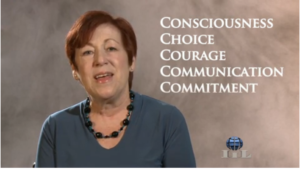 It was Stephen Covey who said, “Next to physical survival, the greatest need of a human being is psychological survival—to be understood, to be affirmed, to be validated, to be appreciated.” It’s a philosophy that Judy Umlas, Senior Vice-President of International Institute for Learning, lives every day. She is such a passionate giver of acknowledgment that she has written The Power of Acknowledgment and Grateful Leadership to tout its many benefits.
It was Stephen Covey who said, “Next to physical survival, the greatest need of a human being is psychological survival—to be understood, to be affirmed, to be validated, to be appreciated.” It’s a philosophy that Judy Umlas, Senior Vice-President of International Institute for Learning, lives every day. She is such a passionate giver of acknowledgment that she has written The Power of Acknowledgment and Grateful Leadership to tout its many benefits.
Unlike other organizational gurus who plug recognition alone as a key to employee engagement and wellbeing, Judy says that recognition loses power without sincere acknowledgement. “Recognition is something action-based, the outward act of appreciating something someone did. It’s a wonderful thing to offer recognition,” she says. “But acknowledgement is a heartfelt communication that lets a person know their value and the contribution they’re making.”
Judy and I spoke recently about how leaders build workplace cultures of wellbeing and high performance through acknowledgment, and she shared a tool she calls the 5 Cs (also described here):
1. Consciousness
2. Choice
3. Courage
4. Communication
5. Commitment
How do the 5 Cs come alive? Judy shared a profound example from a training session she recently did with leaders at a major cancer research center. “At the very beginning of the course I asked attendees why they came. One woman said, ‘I have a debt to pay: I had a son with stage 4 leukemia whom everybody had given up on. I brought him to this center and he is cured. Not just in remission—he is cured.’ She had the opportunity to give back, and she thought acknowledgment was the way.”
The woman’s son happened to be in the building that day, so Judy asked if he’d be able to come in a speak for a few minutes. He said he would.
And he delivered an acknowledgement of the people in the room that was profound. “You, leaders of the information technology function, have all saved my life. And now I’m getting married and I’m so happy and I have a whole life ahead of me, and I thank each and every one of you.”
The people in the room started weeping and cheering, Judy said. “They had no idea the difference that they’d made. On a day-to-day basis, they don’t see the people who benefit from their work; they see computers. And just on a whim, I had asked him to come in, and that was me being in the moment. I didn’t know for sure if it would work, as I thought he might come and say, ‘Thanks, nice seeing you,’ and go away, but he spoke for ten minutes, and he transformed those people and their experience of the difference they made.”
That was the first C, for Consciousness, she says: “You have to be conscious of the acknowlegments that fill your brain, and share them.” (You also have to be present and mindful enough to see an opportunity like inviting the young man to speak!)
The second C is Choice. The young man had a choice to speak. “He could have said no,” Judy says. “But he chose to come in and deliver an acknowledgment to them. I didn’t tell him what to say—I just said can you share your experience with these people? And he did and it was one of the most moving experiences of my career.”
The third C is Courage. “That guy was in his early twenties and he was speaking to all these IT gurus and grownups, and he did it anyway!” Judy says. “He did it eloquently, he did it magnificently, and that took huge courage.”
The fourth C is for Communication, and how a person decides to communicate. The young man could have written letter. He could have just said thanks to everyone at the hospital and written to the president, Judy points out. “But he chose to come in, be courageous, and speak in a public setting.”
The fifth C is Commitment. Once you see something happen—like those people who heard the young cancer survivor speak—something lights up, Judy says. “Those people got going. They formed a committee. They want to employ the power of acknowledgment throughout their organization to thousands of their people.”
How can you put the 5 Cs of Acknowledgment into action in your own life and the way you lead?
For more information on Grateful Leadership and The Power of Acknowledgment, visit www.GratefulLeadership.com. To get a beautiful, downloadable poster of the 5 Cs, send a note to Judy at judy.umlas@iil.com.
READ MORE
• 7 Key Leadership Roles for Inspiring, Mobilizing, and Sustaining a Culture of Wellbeing
• Altruism: What’s in it for Me?
• What the Sage and the Deer Know: The Power of Gratitude
• Read About Other Inspiring Leaders in Our Face of Wellbeing Leadership Series






